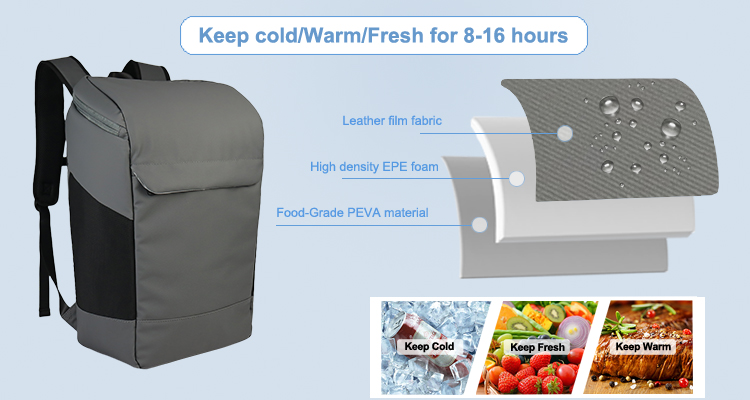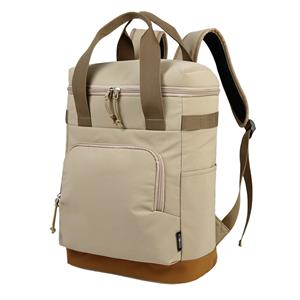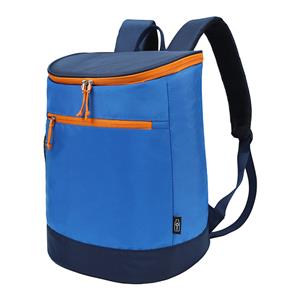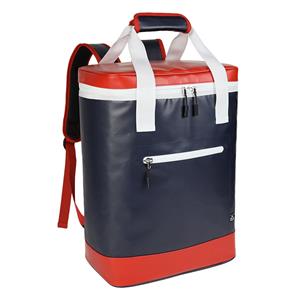Outdoor Coolers: Navigating the Terrain of User Needs
The diversity of outdoor enthusiasts' needs creates a complex terrain that outdoor cooler manufacturers must navigate to design products that resonate with different user profiles. From the minimalist day hiker to the expedition - level adventurer, each group brings unique requirements that shape the features and functionalities of outdoor coolers. Understanding this landscape is key to developing coolers that not only perform well but also enhance the user's relationship with the outdoors.

Day hikers and outdoor fitness enthusiasts represent one segment of this terrain. Their priority is mobility, and they demand coolers that are lightweight yet capable of preserving essential items for the duration of their activity. Soft - sided coolers with backpack - style straps have become popular in this category. These coolers often feature hydration - compatible designs, with openings for water bottle storage and insulation that keeps water cool for several hours. Their compact size means they can be easily carried without hindering movement, and when the hike is over, they collapse for convenient storage. For urban explorers who hike in city parks or short trails, these coolers might also include时尚的设计元素 that appeal to a style - conscious demographic.
Families with children introduce another dimension to outdoor cooler needs. The family cooler must be large enough to accommodate varied food preferences, baby formula, juice boxes, and often separate sections for adults' and children's items. Durability is paramount, as family coolers are frequently moved from vehicle to campsite, handle the enthusiastic opening and closing by small hands, and sometimes serve as makeshift seats or tables. Many family - oriented coolers come with child - friendly features such as easy - open zippers on soft - sided models or latches that can be operated without成人 - level strength. They also often include organizational tools like separate compartments for snacks, beverages, and perishables, helping parents maintain order amidst the chaos of family camping.
Adventure sports participants, such as kayakers, mountain bikers, and rock climbers, push coolers to their performance limits. For kayakers, the cooler must be fully waterproof, with the ability to float and resistant to corrosion from constant contact with water. Some models are designed to be mounted on the kayak itself, with bungee cord attachments or custom fittings that prevent movement during paddling. Mountain bikers, on the other hand, need coolers that can withstand the vibrations and impacts of trail riding. Coolers with reinforced bases and secure closures that won't come undone during a ride are essential. Rock climbers might prioritize coolers that can be anchored to a climbing rack or have magnetic components that adhere to metal surfaces, keeping the cooler within reach but out of the way during ascents.
The territory of outdoor coolers for photographers and researchers is specialized and nuanced. These users require precision temperature control to protect sensitive equipment and samples. Photography coolers may include features such as adjustable dividers to accommodate different camera sizes, lens storage with cushioning, and climate - controlled compartments to prevent lens fogging due to temperature changes. For field researchers, particularly in biological or geological studies, coolers must maintain specific temperatures for specimen preservation. Some research - grade coolers come with temperature logging capabilities, providing a record of internal conditions to ensure the validity of collected data. The insulation in these coolers is often superior to standard models, with laboratory - grade materials that minimize temperature波动.
Older adults and outdoor enthusiasts with mobility challenges present another important user group. For them, coolers must balance accessibility with functionality. Features such as telescoping handles, wheels for easy rolling, and lighter - weight materials make it easier to transport coolers to and from vehicles and across camping sites. Some coolers incorporate ergonomic designs with larger openings for easier loading and unloading, as well as non - slip surfaces to prevent accidental tipping. The focus here is on reducing physical strain while still providing reliable cooling performance.
The growing trend of pet - friendly outdoor activities has also influenced cooler design. Pet owners seeking to include their furry companions in outdoor adventures need coolers that can store pet food, water, and medications at appropriate temperatures. Some coolers now feature pet - specific accessories, such as bowls that attach to the cooler's exterior or insulated sections designated for pet supplies. The durability of these coolers is enhanced to withstand the occasional bumps and jumps from excited pets.
In regions where extreme weather conditions are common, outdoor coolers must be specifically adapted. In desert climates, coolers with enhanced solar - reflective properties and superior insulation to combat the intense heat are necessary. These models may also include ventilation systems to prevent pressure build - up from extreme temperature differences between the cooler's interior and the blazing external environment. In northern or high - altitude areas with freezing temperatures, coolers can serve a dual purpose by preventing contents from freezing. Insulation that works bidirectionally, maintaining both colder - than - ambient and warmer - than - ambient temperatures as needed, is a valuable feature for these users.
The cultural context of outdoor activities also shapes cooler requirements. In some regions, communal outdoor dining is a central part of the culture, necessitating coolers that can accommodate large quantities of food and beverages for sharing. These coolers might feature serving - friendly designs with built - in cutting boards, utensil holders, and drainage systems for easy cleanup after communal meals. In other areas, outdoor coolers are integrated into traditional practices such as picnics during religious festivals or community gatherings, requiring coolers that respect cultural aesthetics and functional norms.
Manufacturers navigating this diverse terrain must engage in extensive user - centered research, gathering insights from different demographics and outdoor scenarios to inform their product development. This involves not only technical testing of insulation performance and durability but also ethnographic studies of how coolers are used in real - world settings. By understanding the rituals, challenges, and aspirations of various user groups, manufacturers can create outdoor coolers that go beyond basic functionality to become integral parts of the users' outdoor experiences.
The future of outdoor coolers will likely see even more tailored solutions as technology and materials science advance. 3D - printing could allow for highly customized cooler designs that meet the exact specifications of individual users. Smart technology integration will become more refined, with coolers offering personalized temperature settings through mobile apps and predictive maintenance alerts based on usage patterns. The goal remains to traverse the terrain of user needs with innovation and empathy, ensuring that every outdoor enthusiast, regardless of their specific requirements, has a cooler that enhances their connection to the outdoors.





